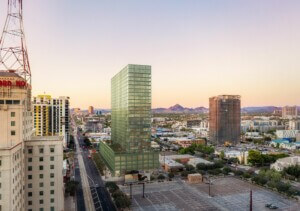Like in many major cities across America, the procedures put in place to mitigate the growing homelessness crisis in Los Angeles are plainly insufficient. Nerin Kadribegovic, the founder of the Los Angeles–based firm Kadre Architects, cannot hide his frustration with the countless obstacles to providing housing for those who need it most urgently. “It doesn’t matter how many times you go through the process,” Kadribegovic explained. “Aside from the fact that California has made it too easy for community members to oppose new development, the many funding sources required to develop affordable housing each have specific requirements that together decrease their efficiency and increase their overall budget in ways that can delay their construction for years.”
Kadre Architects, in collaboration with Lehrer Architects and the City of Los Angeles’s Bureau of Engineering, has recently completed the Northeast New Beginnings Community, a 34-unit interim housing development on a 35,000-square-foot plot of land wedged between the Arroyo Parkway, the Golden State Freeway, Avenue 19, and Riverside Drive in Cypress Park. The site’s irregular shape, location, uneven slopes, limited accessways, disorganized underground utilities and poor soil conditions all had to be resolved with an approximate budget of $10 million.
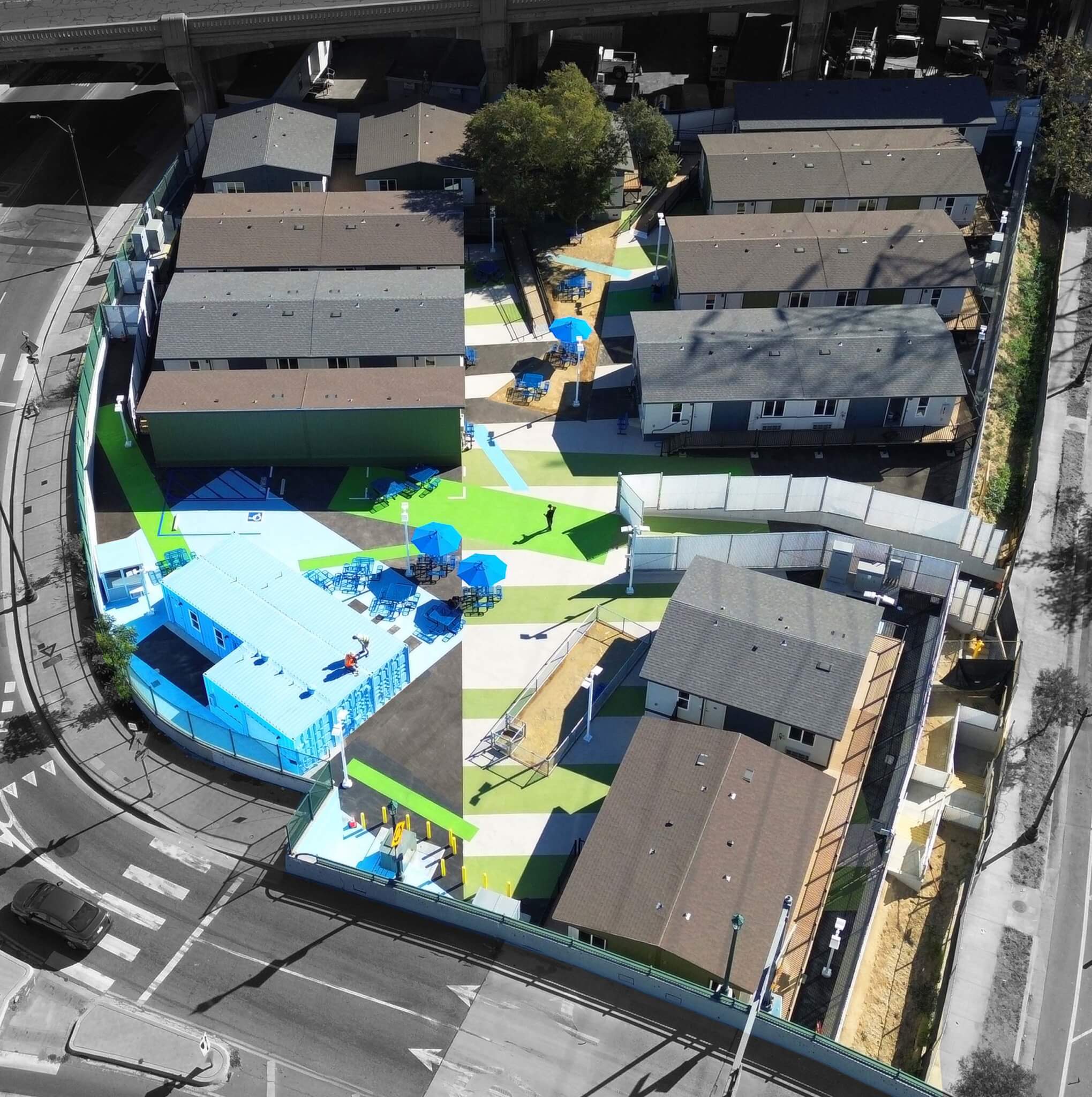
Like Alexandria Park, another interim housing development designed by the same team in 2022, New Beginnings transforms space into place using little more than paint and painter’s tape. The central space is animated by wide blue and green paint stripes, a cost-effective design measure that turns an otherwise vast space into a series of unprogrammed zones. The case manager’s office, a former shipping container ensconced in the same baby blue found on the “urban rug” surrounding it, is at the center of a village of prefabricated homes designed by Mobile Modular. These were purchased by the city prior to selecting a design team for the site. The team went to great lengths to keep the one existing tree on site, which the team believed was worth preserving as a landmark, a spot of shade, and a testament to the changing functions of the irregular site.
New Beginnings, like other interim housing designs currently underway across the city, demonstrates a few challenges to the building type that are yet to be overcome. The need to cut costs put a lot of pressure on paint and a single tree to improve a site that’s close enough to the freeway to pose real concerns over air pollution to its temporary residents. More broadly, interim housing can end up costing the public sector just as much as permanent housing. “Though it is cheaper to build on the front end, interim housing is more expensive to operate,” said Almas Sayeed, senior manager for housing and program support at the Homeless Initiative. “Even with a streamlined process, it’s expensive to continually provide meals and hire service providers, on-site case managers, nurses, and custodians with prevailing wages.”
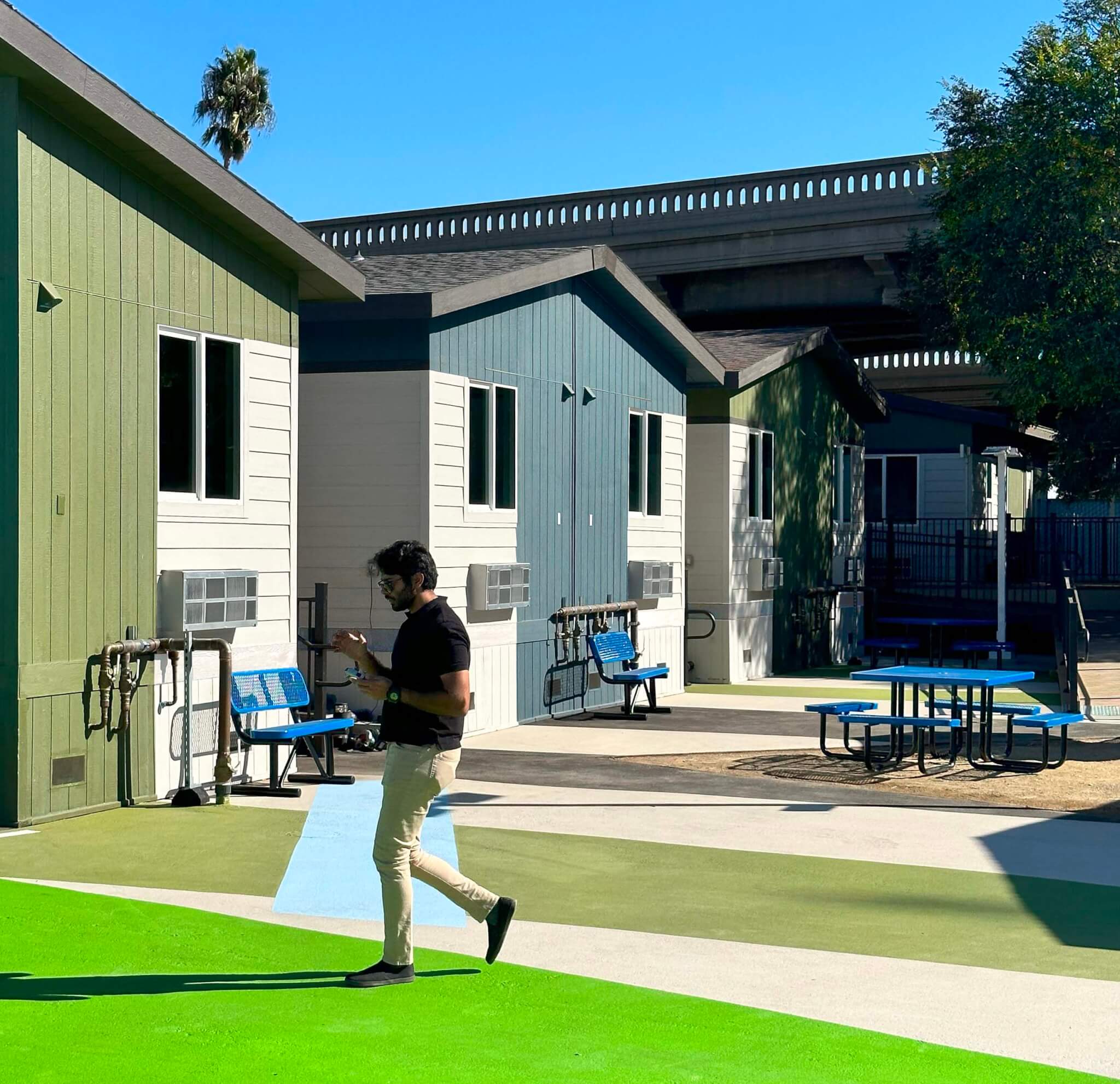
Throughout Los Angeles County, where there are an estimated 70,000 people experiencing homelessness, it currently takes more than $600,000 and five years to build a single affordable housing unit. The math simply doesn’t add up.
That’s according to Brian Lane, a local architect and principal of Koning Eizenberg whose widely-distributed open letter to mayoral candidates in 2022 expressed the downfalls of California’s regulatory approach toward development. “Bureaucracy is in the way of achieving permanent affordable housing adding to costs, slowing production and negatively impacting community benefit,” Lane argued. Updating zoning codes, redistributing infrastructure costs, and planting trees on unshaded sidewalks were just a few of the solutions offered for a “shared vision” of the city that has long been divided on economic inequality.
Several potential solutions have since emerged that promise to either simplify the county’s bureaucratic structure or muddle it further. Shortly after taking office, Mayor Karen Bass signed Executive Directive 1 (ED1), an order that mirrors the first solution offered in Lane’s ten point proposal, which claimed to expedite the development process on shelters and affordable housing projects in Los Angeles.
ED1 has already shaken up a byzantine process; combined with state density bonuses, it has enabled permitting for approximately 16,000 new units. Some locals, however, are reasonably concerned that the mayoral order might have unintended consequences. Frances Anderton, a journalist that has co-authored the Housing Terminology Playbook, has heard concerns about the scale and livability of ED1. “Community activists argue that ED1 projects will displace existing, rent-stabilized apartment buildings and they object to an exemption from paying prevailing wages to construction workers,” Anderton told AN. “Some experts object to an exemption from ED1 projects for Single-Unit Residential (R1) zones, a political calculus they say guts the spirit of the directive.”
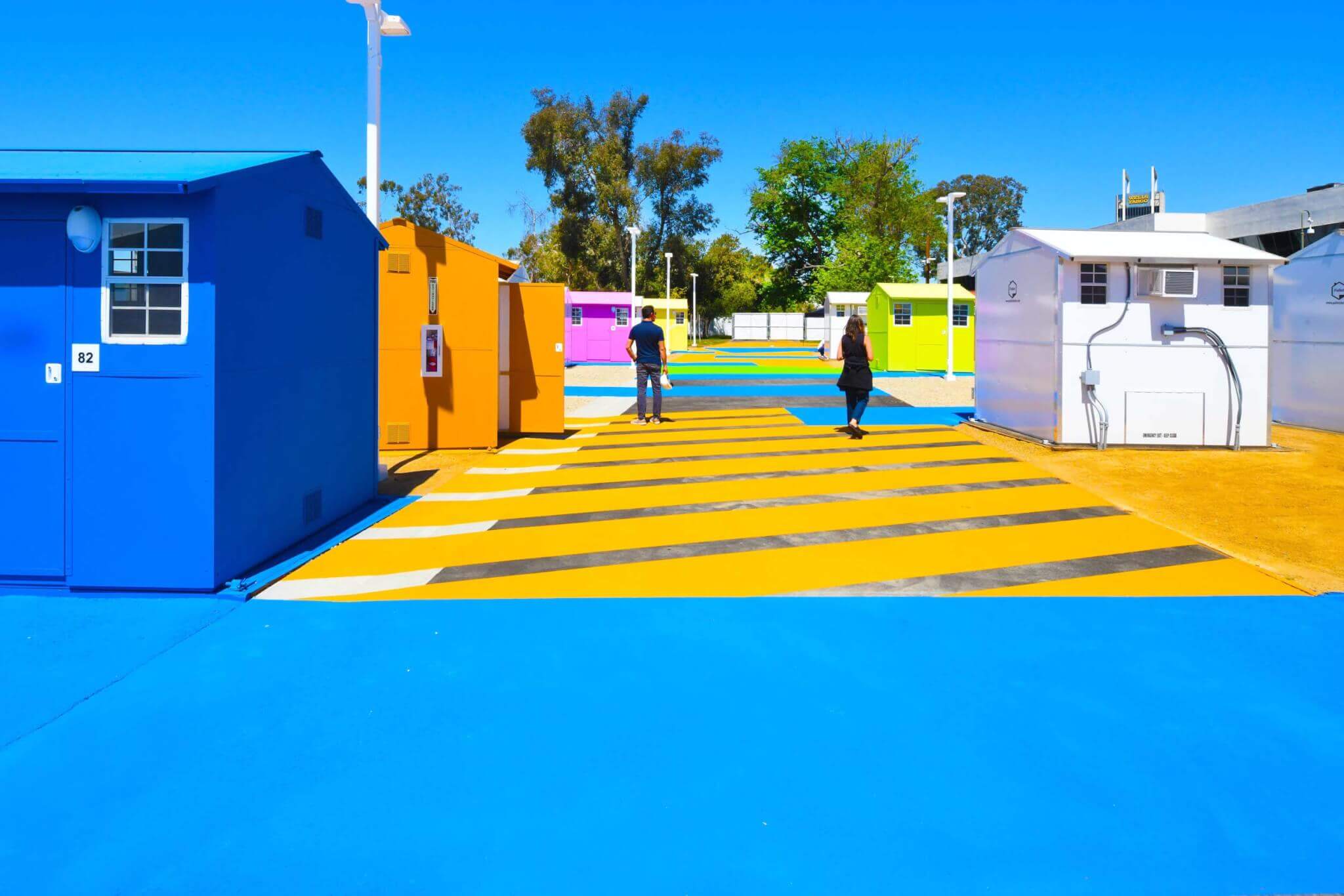
While the challenge of increasing the stock of well-designed affordable housing is underway, many of those in need of permanent accommodations do not presently qualify for them. Interim housing has thus appeared in recent years as a critical piece of the larger housing infrastructure that is often quicker and easier to build than permanent housing. “Our primary goal for anyone experiencing homelessness is to get them into permanent housing as a long-term solution,” Elizabeth Ben-Ishai, the Los Angeles County Homeless Initiative’s Housing Manager, told AN. “But many, including those without documents or coming out of incarceration, require access to needed services before permanent housing is appropriate.”
Homekey, according to the Homeless Initiative, is the “fastest, largest, most cost-effective addition of interim and permanent housing in California history,” and has already been used by Los Angeles County to acquire 32 properties, mostly hotels and motels, for conversion into over 2,000 units of interim and permanent housing. Last year, the program unveiled Dunamis House, a historic property-turn-residence for youth at risk of homelessness in Boyle Heights.
The city’s transition away from congregate shelters, which place many individual beds within a single room, toward non-congregate facilities, such as motel conversions and tiny homes, has additionally offered architects an opportunity to experiment with a new building type.
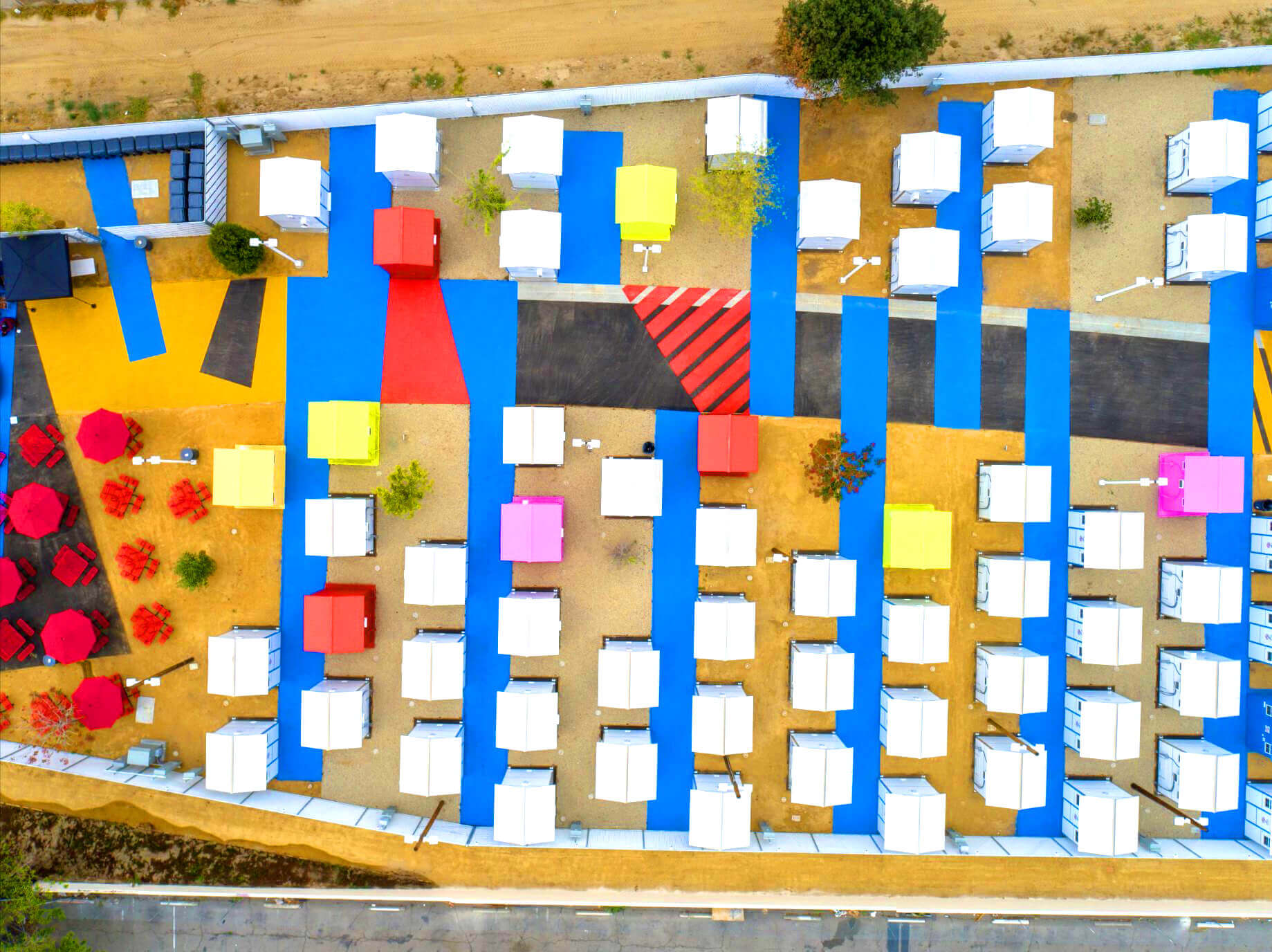
ED1 and interim housing, then, are two of many efforts to patch the holes in a leaky system. Though many disparate efforts are underway to right a wrong, the city’s past spirit of individualism continues to haunt its present. “The bottom line is we have a struggle between two versions of Los Angeles,” says Anderton. “On one hand is the mid-20th century Los Angeles, which prioritized residential zoning for single-family homes and low-rise development. On the other is 21st century Los Angeles, which is now trying to shoehorn high-density housing and mass transit in and around the earlier city. This won’t truly work until Angelenos agree on a single, collective vision for housing.”
Shane Reiner-Roth is a lecturer at the University of Southern California








